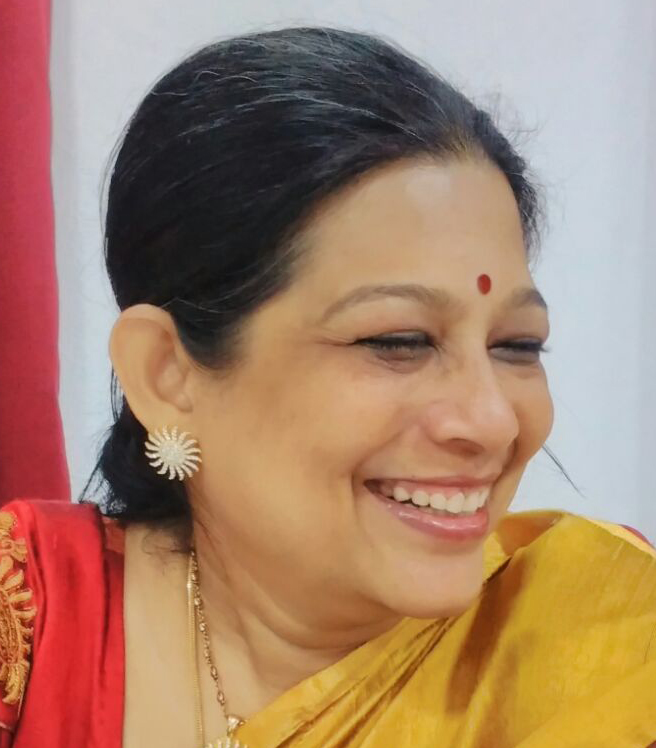Chandrika R Krishnan
Guest Blogger
From time immemorial, left-brained people are considered logical, analytical, and methodical, while right-brained people are supposed to be creative, disorganized, and artistic. Though this theory has been refuted the stereotypes continue and people still view creative people as illogical, emotional, and women! Our education system too gives more weightage to the hard-core subject and anything off-beat in terms of academics is considered to be a fall-back option rather than one of choice.
An anecdote goes that a child was looking out the window in a classroom deep in thought when the teacher asked the child, “What are you doing?”
The child says, “Thinking ma’am.”
“Don’t think and listen!”
Isn’t that what we have been training our children right from the age of three when we send them to pre-school to do as the teachers bid.
Surprisingly, creativity is the top trait that CEOs look for among incoming employees. It is said that creative activities increase our well-being and happiness significantly.

W. H. Davies had written a poem titled Leisure in 1911. He began the poem as:
What is this life if, full of care,
We have no time to stand and stare?
He ended the short couplet with:
A poor life this if, full of care,
We have no time to stand and stare.
A time came when multi-tasking was touted as the most effective. Running from one task to another we roller-skated through life priding ourselves in learning Math, Statistics, Physics, Chemistry, and Biology. We ironed clothes while watching TV or knitted while travelling. We prided ourselves and our children by enrolling them in music classes, tennis classes, cricket coaching, and drawing classes but all of them came to a screeching halt when they had to appear for their year-end examinations. There are still families that believe reading fiction is frivolous and one is the smartest only when one focuses on serious subjects.
Even languages were learnt with the sole purpose of clearing examinations. Home science, art and craft, and other projects were done in a desultory fashion, if at all. Simply put, creativity arises when your mind is unfocused, daydreaming, or idle. It’s the proverbial “a-ha” moment in the shower or simply when you are doing nothing.
Scott Barry Kaufman, scientific director of the Imagination Institute at the University of Pennsylvania and author of Ungifted and Wired to Create, explains that being idle and letting your mind wander constitute the optimum state for inventive thought and new perspectives. And our experience going through this pandemic has shown us that we need well-being more than ever. But we also desperately need creativity. The ability to change and adapt to the changing tides is the need of the hour in this uncertain world.
Dr. Kyung-Hee Kim, a professor at the College of William and Mary, discovered that we are in the midst of a “creativity crisis.” She published some alarming statistics showing that, since 1990, there has been a steady decline in creativity scores.
I grew up in an era when talking to oneself was not considered wrong for all my peers were also at it! We knew how to keep ourselves entertained in case there was a dearth of company. Boredom was an alien concept. I made ditty and drove my family deranged by singing them too!
Growing up, there were huge lists of our favourite things – right from regaling one another with ‘ghost stories’ to staging plays on terraces and starting a club à la Secret Seven (who hasn’t?) with badges and a password.
According to an article in psychology today
Over the last seventy-five years a number of theorists and researchers have identified the values of such imaginative play as a vital component to the normal development of a child.
Still not convinced? Here are some examples.
One of the most powerful and common ways to hone creativity is to set aside time throughout the day to do irrelevant and mindless tasks that let your mind wander. Basically, chill.

In 1881, famed inventor Nikola Tesla had fallen seriously ill on a trip to Budapest. There, a college friend, Anthony Szigeti, took him on walks to help him recover. As they were watching the sunset on one of these walks, Tesla suddenly had the insight (rotating magnetic fields) that would lead to the development of modern day’s alternating current electrical mechanism.
Composer Ludwig van Beethoven famously said that music just came to him: “Tones sound and roar and storm about me until I have set them down in notes.”
Even Albert Einstein attributed insight to something beyond linear thinking and logic alone. He turned to music—Mozart in particular—when he was grappling with complex problems and needed inspiration. He is quoted as saying, “All great achievements of science must start from intuitive knowledge. I believe in intuition and inspiration…. Imagination is more important than knowledge.”
How then can parents encourage creativity among their children? More importantly, how do they make the children think in this living through Instagram era?
Leave the phone!
Lead by example and keep the phone away. Talk, Ask, and Encourage. Encourage with questions that elicit more than just yes or no answers. Some of the examples are: “What do you think? How do you feel?” Mobile phones lead to linear thought so it would be better if we don’t pursue all our free time scrolling through the phone allowing information overload leaving no time to ponder.
Make one meal a family affair. Talk about world affairs and keep them age appropriate. Don’t stop from discussing unpleasant things too. Protecting your children does not make the societal problem disappear. Every year, we had a Numaish exhibition in Hyderabad. My father used to allot a fixed amount of money and the time we spent wondering on what we would spend it on was in itself more pleasurable than actual spending!
Don’t keep family finances a secret. Teach children to manage to make do with things that we had and make do with things that we could not have.
Allow children to grow without micromanaging and orchestrating their free time. Let them be. Boredom makes them look at other avenues for keeping themselves entertained.
Go for a long walk, trek, short trips, and long drives. Teach children to host a play in their apartment complex. Encourage outdoor games. Organize Sunday Mela and bring back the games of yore. Organize an impromptu quiz among your children and friends. There are hundreds of games that do not need anything more than time to sit around and play like word building or Name, Place, Animal, Thing.
Unfortunately, our rote learning is such that children are not encouraged to think beyond the obvious. I remember posing this question for a 3rd-grade EVS paper when I was a teacher:
If you were standing in front of the Taj Mahal, which city would you be in?
There was a furore among the parents of the pupils for they taught their child
Taj Mahal is in ___________. (Agra)
Hence, they lost out on one mark.
Even if the education system does not support it, you encourage children to think out of the box.
After watching a movie, why not encourage a lively discussion on the best scene and the worst and how they could have been made better? The same could be done for a book too. A story can be narrated at the dining table, with the parent holding back the ending and asking each child to come up with one.
To conclude, there is no need to be a super-human mom, child, parent, or employee. It is okay if you are not being productive all the time. Take time to relax, just chill and alternate between intellectually stimulating work with easy on the brain work. The brain immediately goes into its problem-solving mode and voilà your problems get clarity.
[Banner Image by – Lidiia Nemyrova on Unsplash]

Chandrika R Krishnan, a Bengaluru-based writer and educationist who likes all things beginning with a ‘T’ – talking, teaching, tales, and tea.
A people person and a born observer, she weaves fiction and dispenses ‘gyaan’ alike to the unsuspecting audience. Her 350 + articles and stories (both in print and online media) are mostly eclectic and experiential. She is a published author, and her collection of flash fiction was published recently titled- vignettes- a slice of life. Her stories feature in many anthologies.
You can read her articles @ https://chandrikarkrishnan.com/

About A New You:
We all deserve to have everything in our life exactly the way we want it.The first step begins with believing that every moment is bringing an opportunity to be a new you. As a founder, I provide tools to elevate all dimensions of your life and I teach you the art of writing to reach to your true potential.
Vandana Sehgal | Founder – A New You
Very useful article thanks Chandrika and Vandana